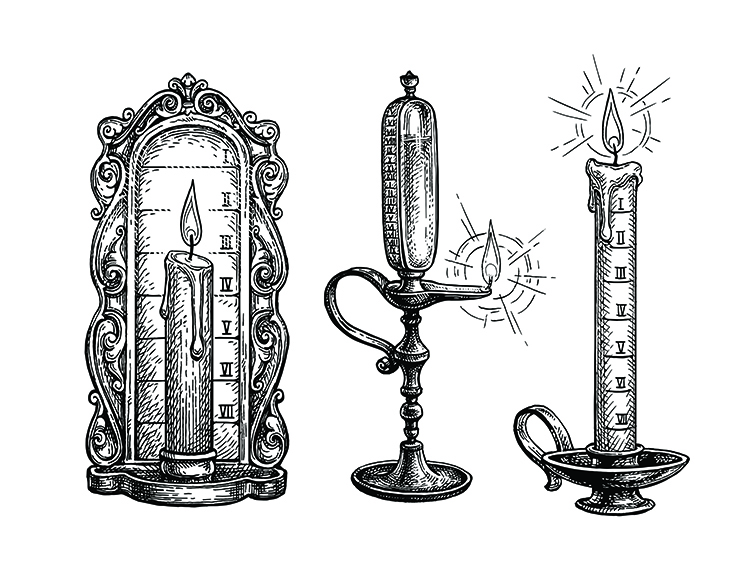
Photo: Stock Photos from NATALIMA/Shutterstock
Today, candlelight is primarily used for romantic dinners or temporary solutions in power outages. Before electricity, however, the candle had diverse uses. Candles were a critical source of light, they could be affixed to chandeliers or carried around in convenient brass holders. And their wax could be used to seal correspondence for privacy or official approval. Candles could also be used as alarm clocks—a function which is arguably obsolete now, but is an important part of the history of telling time.
The candle clock is an ancient technology. The first recorded reference was in 520 CE in a Chinese poem by You Jiangu. He described six uniform candles of equal weight and thickness—each 12 inches tall. The candles were marked in sections of one inch. Each inch took 20 minutes to burn and an entire candle lasted 4 hours. Enclosed in structures to protect the flame, the candles could be used to gauge the passage of time—a technique perfect for when the sun was not visible.
Other early references to candle clocks exist in Japan during the first millennium CE. Thousands of miles away, King Alfred the Great of England was also thought to use this method in English churches. A candle of any size could be used, so long as the time to burn down was established and regular. Through markings, candles could be subdivided for more incremental measurements of the passing of time.
This method of telling time remained in use through at least the 18th century, despite the increasing ubiquity of traditional wound clocks. In addition to indicating the time, the candles could also serve as alarm clocks. One might stick metal nails into a candle at a desired time interval and place the candle in a metal holder. Once the wax melts at the desired level, the nail falls into the metal base with a clatter, serving as an alarm. This was another option for those seeking to wake up early: factory whistles, street criers, and (of course) roosters could also serve this purpose.
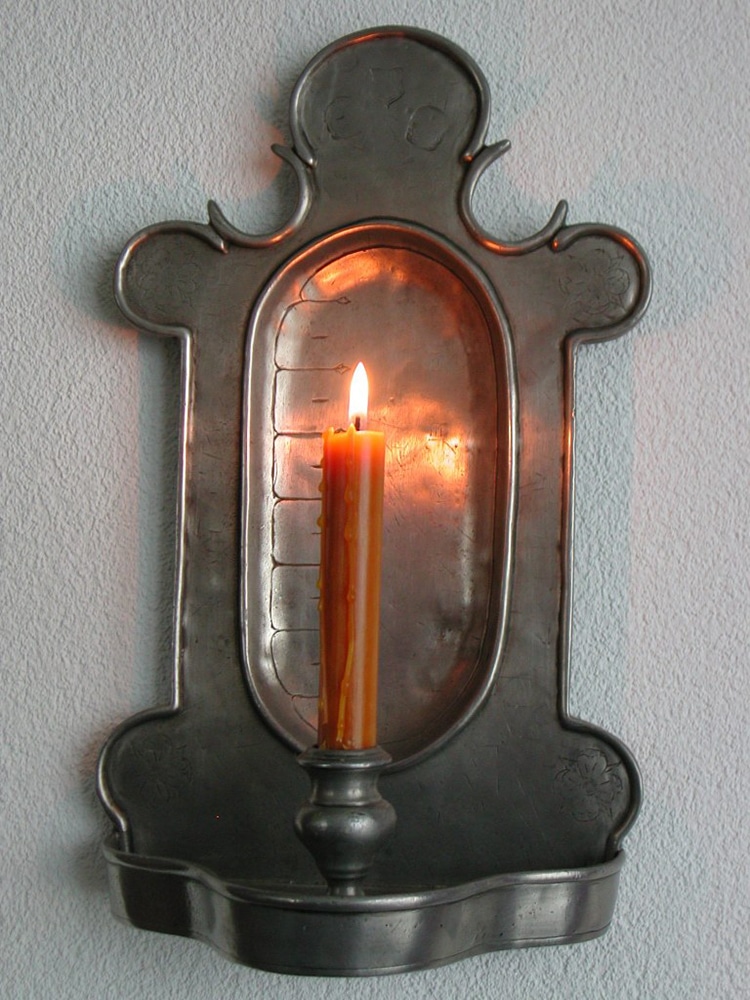
A German candle clock, known as a Kerzenuhr. (Photo: de:Benutzer:Flyout via Wikimedia Commons, CC BY-SA 3.0)
A famous example of an especially intricate candle clock is the clocks of Al-Jazari—a 12th century Muslim engineer and polymath. Known for his water pump and clock inventions, he created a candle clock which used a system of pulleys and weights to transform the continual burning of the candle into time which could be read on a frontward dial. This advanced system was just one of the inventor's clocks—he also designed water-based clocks which tracked astrological movements.
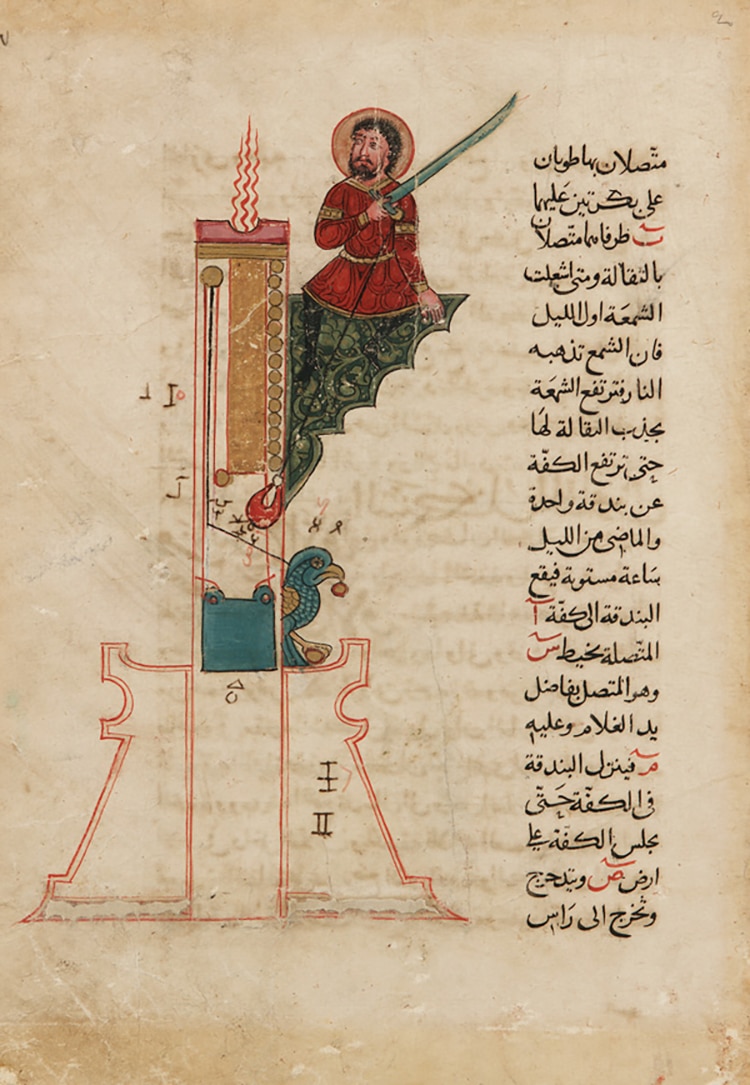
The candle clock of Al-Jazari, 1206. Illustrated by Farruk ibn Abd al-Latif in 1315 CE, and dated Ramadan 715. (Photo: Wikimedia Common, Public domain)
The candle clock is among the diverse ways ancient civilizations measured time. There are also methods which appear much earlier in the historical record. The ancient Egyptians used water clocks and sun dials as early as 1500 BCE. Known as clepsydra, varieties of water clocks were also used by Indigenous peoples in the Americas and Africa. Oil lamps were also used for both light and measuring time; as the oil burns, time can be incrementally measured much as with the candle clock.

A portable sun dial, known as an angbu ilbu or an angbu iryeong, with compass. Made in 1871 during the Joseon Period in Korea. (Photo: National Museum of Korea via Wikimedia Common, Korea Open Government License Type I: Attribution)
Clock-making took great strides in the late Middle Ages. Driven by the physics of oscillating motion of springs and pendulums, the clocks improved in accuracy into the 17th century. Christiaan Huygens' pendulum clock of 1656 was a terrific stride forward—it lost less than a minute of accuracy per day. As mechanical clocks were further developed, clock makers used clever innovations to produce alarms at set times. Some clocks used gunpowder and fuses to create a loud noise at a certain triggered time. Others used light—springs operated to pop up a lit candle. Much like the candle clock, these solutions sound very much like fire hazards to the modern sensibility.
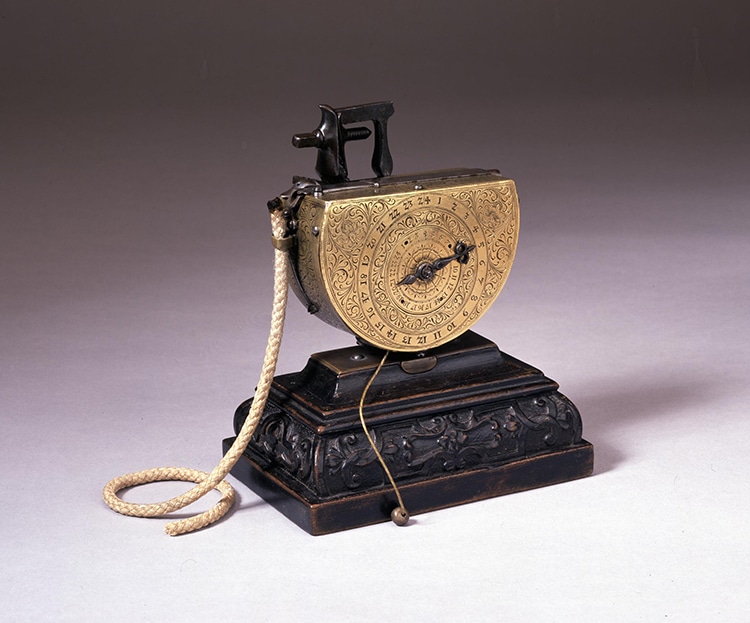
A table alarm clock of steel, brass, and walnut. The alarm uses gunpowder placed in channels to produce an alarm. German, circa 1595-1605. (Photo: © The Trustees of the British Museum, CC BY-NC-SA 4.0)
Telling time while at sea was a particular challenge in the history of clocks. The motion of the ocean and a ship's movement disrupted the movement of pendulums and springs, making traditional clocks useless. Calculations of altitude or position were instead used to approximate time. A medieval instrument which was used through the 18th century was the navicula de Venetiis. This curved sundial measures the angle of the sun above the horizon in any time of year. On the ship-shaped dial were markings which correlated this solar position to the time.
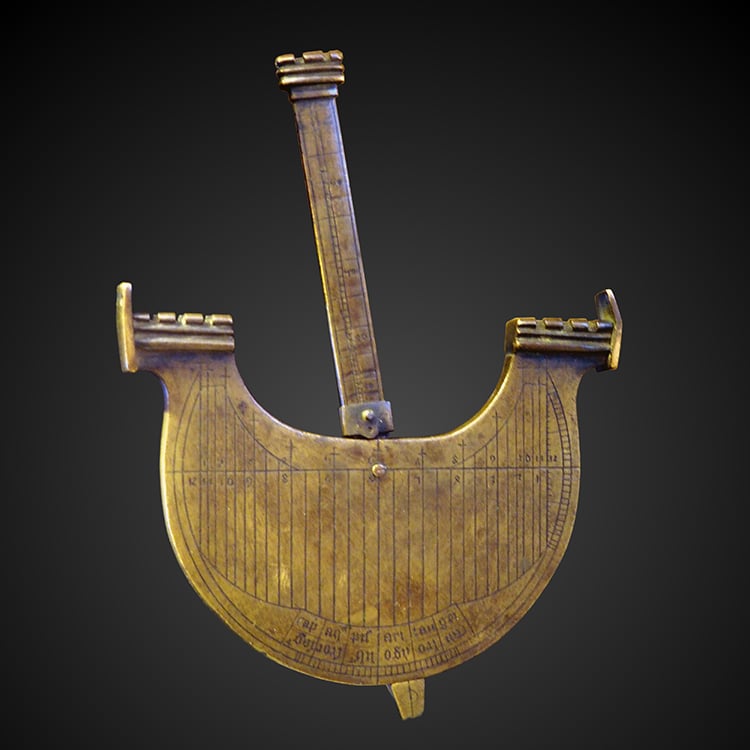
A navicula de Venetiis (“little ship of Venice”), an altitude dial used to tell time. This example is from the 18th century. (Photo: Rama via Wikimedia Commons, CC BY-SA 3.0 FR)
The invention of the marine chronometers in the 18th century changed the face of navigation, but it was also an important moment in the history of clocks and telling time. Generally attributed to English clockmaker John Harrison, the “sea watch” was surprisingly accurate and enabled sailors to avoid miscalculating their courses (which often ended in wrecks). From candle clocks to marine chronometers, mankind has been inventing creative solutions to the problem of telling time for thousands of years.
The candle clock—cleverly marked candles which indicated time as the wax burned down—was an important way to tell time or even set alarms in the days before electricity.
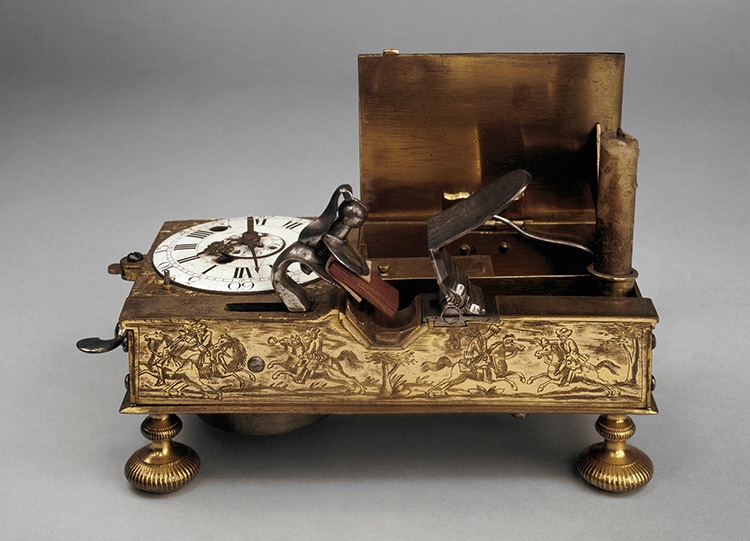
A spring-driven alarm clock featuring an alarm driven by a standing barrel. “As alarm sounds a flint-lock mechanism is released to light a candle which then springs into upright position.” Made in Austria, circa 1715. (Photo: The Trustees of the British Museum, CC BY-NC-SA 4.0)
Related Articles:
These 17th-Century Skull Watches Open Up to Reveal Time as It Passes Us By
Afghan Photographer Uses a Rare 100 Year Old “All-in-One” Camera to Shoot Pictures
Historic Ship Reclaimed By Nature Has a Second Life As a Protective Breakwater
Inhale the Long History of Artfully Designed Perfume Bottles






















































































